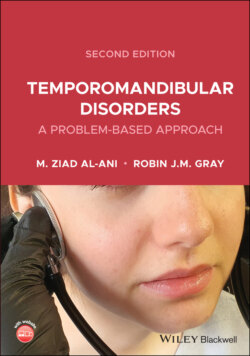Читать книгу Temporomandibular Disorders - Robin J. M. Gray - Страница 74
Signs of bruxism
ОглавлениеTooth surface loss or tooth wear cannot be taken as a sign that the patient is an active bruxist. Even if bruxism is the cause of tooth surface loss, the patient may no longer be performing this parafunctional activity (Figure 3.12a).
Figure 3.12 (a) Attrition, (b) tongue scalloping, and (c) cheek ridging seen in patients who parafunction.
(M. Ziad Al‐Ani, Robin J.M. Gray.)
Dental sensitivity is a common symptom of active bruxism. The anterior teeth are often affected and this is frequently noticed on waking from sleep. Repeated tooth and/or restoration fracture is often also reported.
The two most reliable signs of active bruxism are, however, scalloping of the lateral border of the tongue (Figure 3.12b) and ridging of the buccal cheek mucosa along the occlusal line (Figure 3.12c). These features are due to the soft tissues being thrust against the surfaces of the teeth during parafunction. Ridging of the cheek mucosa is occasionally severe enough to present clinically as frictional hyperkeratosis. Both scalloping of the tongue and ridging of the cheek mucosa usually disappear when the parafunction ceases.
